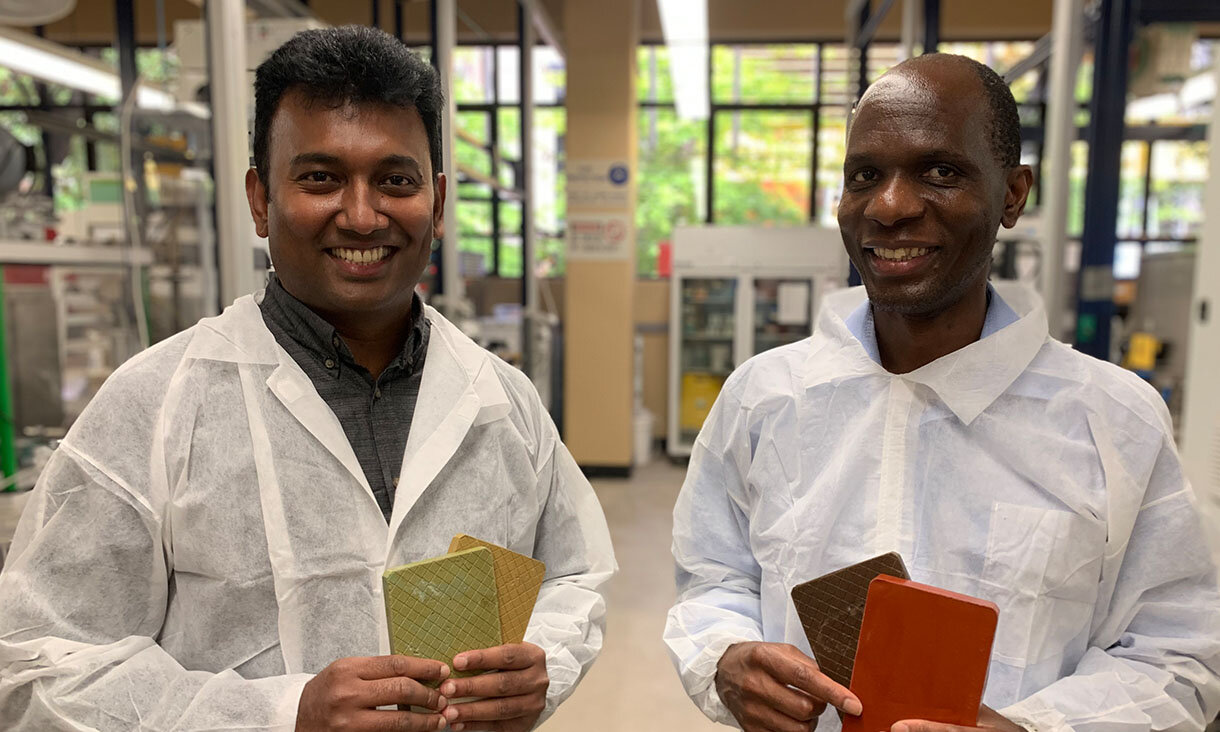Building cladding with recycled glass scores sky-high results in sustainability
Engineers have developed new fire-safe building claddings using recycled glass, creating a promising circular-economy solution to address a major waste stream.
The RMIT University team worked with materials technology company Livefield to produce the composite cladding, which they say is cheap, structurally robust and fire-resistant.
Lead researcher Associate Professor Dilan Robert said using recovered glass waste as an alternative cladding material could one day help reduce the amount of glass that goes to landfill. Globally, about 130 million tons of glass are produced each year, but only 21% of that is recycled glass.
The team’s non-combustible claddings use 83% recycled glass, along with relatively low amounts of plastic binders and fire-retardant additives.
Robert said their special blend of materials overcame the challenges with glass claddings, which were brittle and prone to fracture, as the plastic binders provided “improved toughness.”
“Experiments have proven that our claddings are fire-safe, water-resistant and cheap, and meet structural and environmentally sustainable requirements,” said Robert, who is from the School of Engineering.
The technology has met the key compliance requirement of claddings for non-combustibility (AS1530.1) set by Standards Australia.
The technology, which is now being patented by Livefield, has been trialed for large-scale manufacturing capability.
Panels using the team’s technology are installed at RMIT’s Bundoora campus to demonstrate the technology’s feasibility as building claddings.
“Livefield is keen to upscale the manufacturing process of the recycled class composite cladding, with further research support from RMIT,” Robert said.
A sustainable solution to a big waste challenge
Robert said millions of tons of reusable glass goes needlessly into landfill every year, and more glass could be recycled into products in the construction industry.
“Glass is one of the most recyclable materials in the world as it doesn’t lose its quality or purity, and it can be recycled for multiple uses across a wide range of industries,” he said. “By using high amounts of recycled glass in building claddings, while ensuring they meet fire safety and other standards, we are helping to find a solution to the very real waste challenge.”
The research team of civil and material engineers was keen to work with industry around the world to find more ways of using recycled glass in products, Robert said, noting, “Reuse of glass that would otherwise go to landfill will bring environmental, economic and social benefits.”
Making city buildings fire-safe with the circular economy
Robert said testing of the new cladding materials for fire safety was an important focus of the research: “Claddings play a key role in preventing the spread of fire, particularly in high-rise buildings. Some of the most catastrophic building fires, like the 2017 Grenfell tower fire in London that led to many deaths and injuries, have been attributed to the poor fire-prevention performance of cladding materials.”
These tragic events underscored the importance of understanding and designing fire-resistant cladding materials and systems for the building and construction sector, Robert said, observing, “Building fires can happen anywhere at any time and cannot be predicted. Therefore, fire safety requirements should be embedded in the design of buildings.”
The RMIT team behind the new cladding technology has also recently published research on fire-safe compliance of materials for building claddings and the use of recycled glass in construction products. Both papers are published in Construction and Building Materials.
More information:
T. Thevega et al, Fire compliance of construction materials for building claddings: A critical review, Construction and Building Materials (2022). DOI: 10.1016/j.conbuildmat.2022.129582
Dilan Robert et al, A new technology of transforming recycled glass waste to construction components, Construction and Building Materials (2021). DOI: 10.1016/j.conbuildmat.2021.125539
Citation:
Building cladding with recycled glass scores sky-high results in sustainability (2023, March 8)
retrieved 8 March 2023
from https://techxplore.com/news/2023-03-cladding-recycled-glass-scores-sky-high.html
This document is subject to copyright. Apart from any fair dealing for the purpose of private study or research, no
part may be reproduced without the written permission. The content is provided for information purposes only.
For all the latest Technology News Click Here
For the latest news and updates, follow us on Google News.

